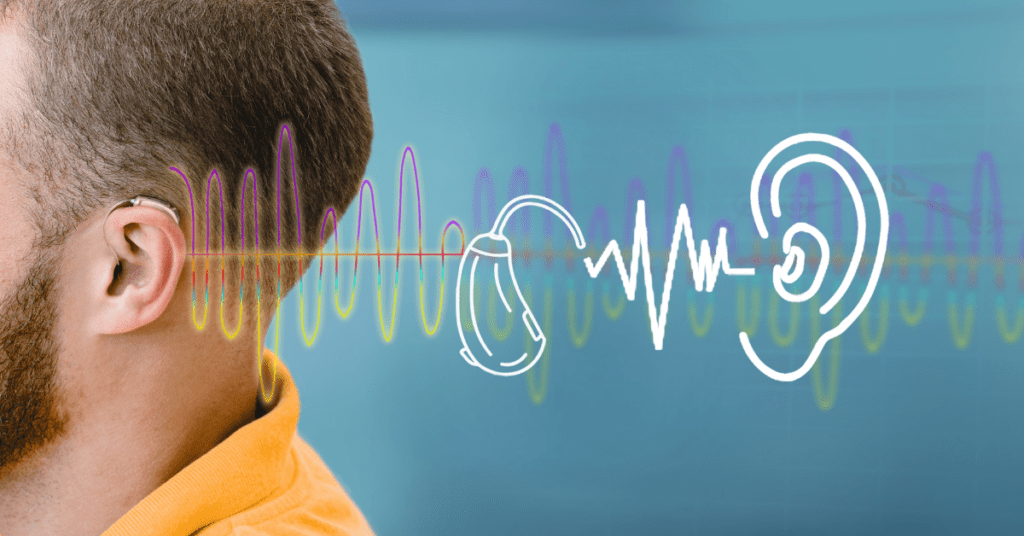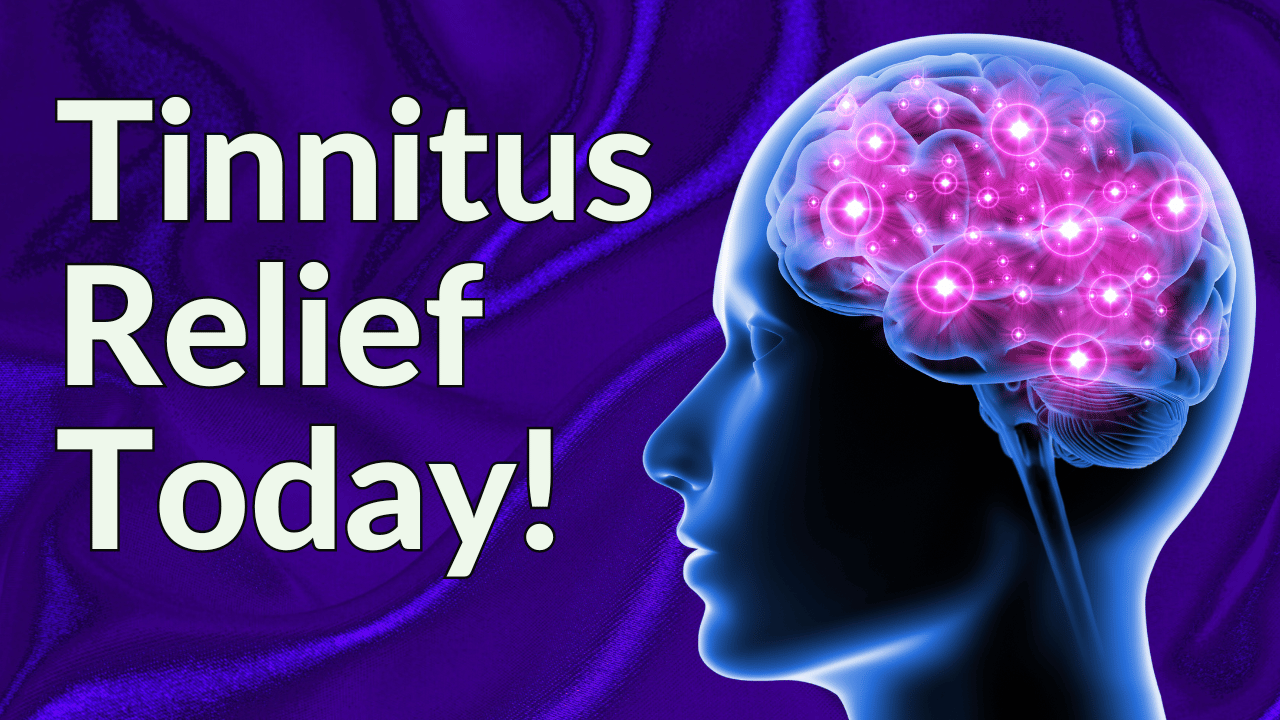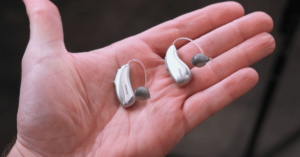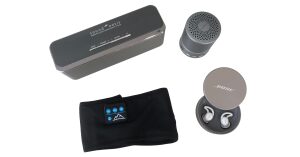Although hearing loss may initially seem fairly straightforward, there are numerous types of hearing loss, with many different origins and causes. From conductive hearing loss, to profound hearing loss, to infection-based hearing loss, there are numerous ways in which the components of the ear fail to keep working, resulting in the loss of normal hearing.
Hearing loss occurs when any part of the ear is not functioning properly. When parts of the ear are not working in tandem, the brain cannot properly process sound, and hearing loss results. Fully understanding the different types of hearing loss requires a general understanding of the components involved in the inner, middle, and outer ear, and how they come together to take in and subsequently process sound waves. The part of the ear that is not functioning properly will determine what type of hearing loss is at play.
Anatomy Of The Ear
There are three basic parts to the ear: the inner ear, middle ear, and outer ear. Each of these parts has its own unique structures and functions, and each of them are involved in the process of taking in and interpreting information. Taking a deeper look at each part can help illuminate the purposes of each and how they factor into hearing function and, ultimately, hearing loss.
- Outer Ear
- The outer ear possesses the pinna, ear canal, and ear drum (or tympanic membrane). The outer ear is the part of the ear most likely to be damaged by direct press or impact.
- Middle Ear
- The middle ear is made up of the middle ear bones (called ossicles), the eardrum or tympanic membrane, and eustachian tubes. The middle ear is a common cause of hearing issues, and can often be the portion of the ear used to treat chronic ear infections.
- Inner Ear
- The inner ear is made up of cochlea hair cells, auditory nerve endings, and the semicircular canals, responsible for the vestibular system or balance. Permanent hearing loss is experienced in this portion of the ear, as it is responsible for transmitting auditory signals.
"Treble Health helped me reduce my tinnitus by about 80%, and now I can live my life again!"

"Treble Health helped me reduce my tinnitus by about 80%, and now I can live my life again!"
– Steve D.
Book a free consultation to learn which Treble Health solution is right for you. Join Steve and thousands more who have found lasting tinnitus relief.
The Four Types Of Hearing Loss
There are different types of hearing loss, each of them related to different parts of the ear, and different sources. The types include:
- Sensorineural hearing loss. In this type of hearing loss, the inner ear is damaged. Ongoing exposure to loud sounds and age related hearing loss are two of the most common reasons for the onset of sensorineural hearing loss, but infection, illness, injury, and congenital defects can all also cause sensorineural hearing loss.
- Conductive hearing loss. Conductive hearing loss is a type that involves the inner ear, but may also involve the elements of the middle ear. Conductive hearing loss occurs when there is fluid in the ear, there is damage to the bones of the ear, there is a hole or perforation in the eardrum, or there is another type of damage to these parts of the ear. This type of hearing loss usually results in hearing that sounds as though the listener is under water, and can therefore cause difficulty hearing speech sounds. Oftentimes, resulting in difficulty determining one sound from another.
- Mixed hearing loss. Mixed hearing loss occurs when both conductive and sensorineural hearing loss are present. In this type, a hearing nerve, components of the inner ear or middle ear, or other aspects of the ear are damaged, resulting in hearing loss. Mixed hearing loss is not as common, but can also come about as a result of prolonged exposure to loud noise, damage to the ears, issues with the structure of the ears, or any combination thereof.
- Auditory Neuropathy Spectrum Disorder (ANSD). An unusual type of hearing loss, this type does not involve the inner ear, or ear components at all, but instead involves the types of sounds being taken in. In ANSD, speech sounds are difficult to detect, and as neurological changes progress, the ability to discern speech sounds continues to decrease.
Sensorineural Hearing Loss
Permanent hearing loss related to damage to cochlear hair cells or damage to the auditory nerve falls under this heading. This can include noise-induced hearing loss, age related changes to hearing ability, or drug damage caused by ototoxic medications. In this form, sound signals cannot be taken in and properly interpreted by the brain, even when the ears send sound signals as usual.
Conductive Hearing Loss
This type describes non-permanent loss due to outer or middle ear disorder or dysfunction. In this type, something obstructs sound vibrations from traveling through the outer or middle ear properly, resulting in diminished hearing ability, and can affect just one ear or both. In conductive loss, cochlear hair cells remain intact, and the condition is frequently treatable with medicine or surgery to correct the conductive component that has been damaged or impaired. Forms of conductive hearing loss are infection (otitis externa or otitis media), otosclerosis, a buildup of earwax, or abnormal bone growth in the ear canal (called exostoses).
Mixed Hearing Loss
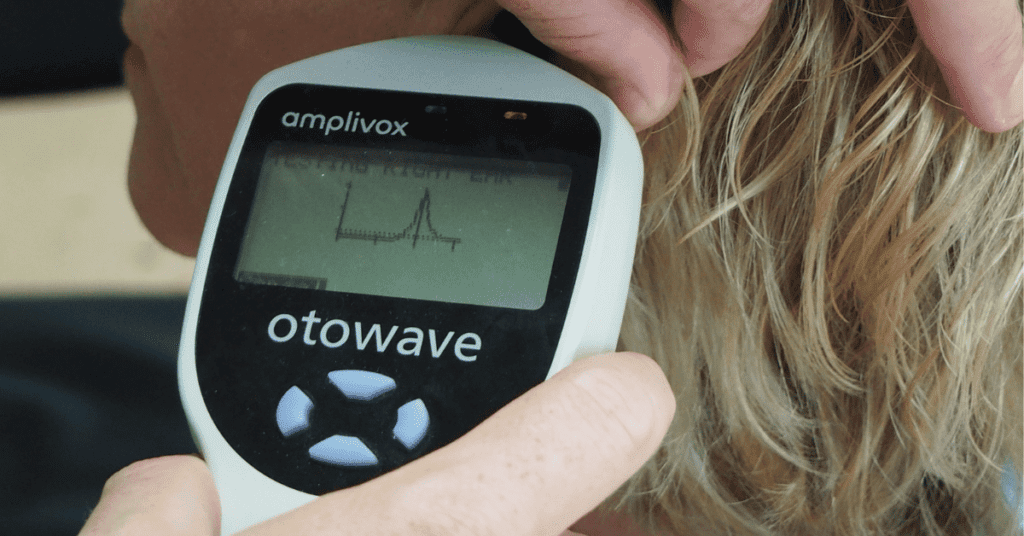
Mixed hearing loss is caused by a combination of sensorineural hearing loss and conductive hearing loss, and can impact the inner ear or middle ear. Mixed hearing loss can often be detected on a hearing test, and can be treated or managed using hearing aids and other interventions. Because it is a mixed disorder that can affect the structure of ears, infection or damage to the ears, or an impaired auditory nerve, mixed hearing loss often has a multi-pronged approach to treatment.
Auditory Neuropathy Spectrum Disorder
This type of loss occurs when sound enters the auditory system normally but, as a result of damage to the cochlear structures or auditory nerve, the brain does not properly process sound waves. This particular type is not age related hearing loss or the result of exposure to loud noise; instead, it is considered linked to issues with development, and is more commonly found in children and babies who were previously in the neonatal intensive care unit.
Hearing Loss Symptoms Across Types
The symptoms of hearing loss are not always straightforward or easy to understand, and may not always spur an immediate need for a hearing test. Instead, symptoms may be associated with issues of the outer or middle ear, or may seem wholly unrelated to the ears. Common symptoms include:
- Needing to ask for repetition
- Turning the TV or radio louder than others
- Difficulty understanding speech, especially when in the presence of background noise
- Difficulty hearing on the phone
- Feeling that everything is muffled or underwater
- Changes to balance
Symptoms can be different according to the different cause or type of loss. Nerve related hearing loss, for instance, will differ from hearing loss caused by damage to the outer or middle ear. Mild hearing loss may present with conditions like tinnitus, while more severe loss might require assistive listening devices to hear anything at all. In many cases, some form of intervention is needed to restore hearing.
How To Treat Hearing Loss
Treating hearing loss will depend a great deal on the type of hearing loss being dealt with. When different structures are involved, and different causes are at the root of the issue, different strategies will be necessary to treat the type of hearing loss being targeted. The types and their most common treatments have been identified below:
- Sensorineural Hearing Loss
- Hearing Aids. This type is treated by amplifying the electrical signals or auditory signals being received by the ear. It is the most common type of hearing loss, and therefore the most commonly treated in older adults. Using an aid, individuals can take in sound information, and hear it more effectively than by listening alone.
- Conductive Hearing Loss
- Medicine or surgical treatments based on medical diagnosis. A medical condition is often involved in this type of hearing loss, and although it is not the most common type of loss, there are plenty of interventions designed to treat it, from repairing the small bones responsible for loss, removing foreign objects lodged in the ear, addressing eustachian tube dysfunction, or even utilizing earwax removal.
- Mixed Hearing Loss
- Mixed loss typically requires medicine or surgical treatments based on medical diagnosis and/or hearing aids. Because mixed loss can be caused by several factors, including certain drugs, a lodged foreign object, or more, and the way it will affect people can differ greatly, treatments are typically different and possess a variable approach.
- Auditory Neuropathy Spectrum Disorder
- Low-gain hearing aids and a Listening and Comprehension Training (LACE) program are common ways to prevent sound from becoming muddled or difficult to understand.
Some types of hearing loss are treated medically, some require surgical procedures to correct abnormal growths, and some will resolve as the infection or illness that prevents sound from adequately reaching the brain and being processed. Many of the standard hearing loss treatments are utilized as tinnitus treatment options, as well, including reducing exposure to loud noises, and utilizing a hearing aid to limit the amount of background noise being taken in and obscuring auditory information. While tinnitus is not currently considered a form of hearing loss, it can be spurred by the same issues that cause hearing loss, including exposure to loud noises, and can be addressed using some of the same techniques as general hearing losses and sensorineural hearing loss, including the use of a hearing aid.
Next Step: Book Free Consultation
- 75% of patients reduced their tinnitus within three months after following our recommendations.
- "I feel like Treble Health literally gave me my life back." - Randy S. (verified customer)
- Join thousands of people who have reduced their tinnitus after scheduling a free consultation.





